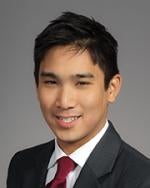TQP Development, LLC v. Intuit Inc.
Addressing an argument that a data-encryption patent was directed to non-eligible subject matter because it covered an abstract idea divorced from a particular machine, Judge William Bryson, sitting by designation in the U.S. District Court for the Eastern District of Texas, denied defendants’ summary judgment motion on § 101, finding that the plaintiff’s “device agnostic” data-encryption patent was directed toward patentable subject matter despite failing to recite a particular machine, such as a computer, and despite the fact that the patent “merely” transformed data from one form to another—which often is not considered a “transformation” under the machine-or-transformation test. TQP Development, LLC v. Intuit Inc., No. 2:12-cv-180-WCB (E.D. Tex. Feb. 19, 2014) (Bryson, J.).
Without specific reference to a machine, the patent-in-suit described a method for transmitting encrypted data, where the transmitter and receiver used identical pseudo-random number generators. The pseudo-random number generators used key values to encode and decode the data. Of particular importance to Judge Bryson was that the pseudo-random number generators change their key values every time a certain number of blocks of data are transmitted. The claims omitted any reference to a concrete device with which to implement the abstract encryption and transmission algorithm.
Judge Bryson addressed defendants’ argument that the patent was improperly directed toward an abstract algorithm, noting that while the Supreme Court has found that abstract ideas are not patent-eligible subject matter, a specific application of an abstract idea may be. As Judge Bryson explained, although the claimed subject matter covered an abstract algorithm, the claims also contained limitations that minimized concerns of excessive breadth. A key limitation was that the patent required the transmitter and receiver to use identical pseudo-random number generators. Also, the patent required the changing of key values after the invention transmitted a certain number of blocks. Judge Bryson deemed both of these limitations to significantly narrow the claimed invention. Thus, although the claims may cover an abstract idea, in Judge Bryson’s view, as claimed, that abstract idea is limited and therefore patent eligible.
Judge Bryson also addressed the defendants’ arguments that the plaintiff’s invention failed the machine-or-transformation test because the invention did not use a machine and merely transformed data from one form to another, instead of the typically required types of transformations. The defendants argued that the patent’s claims merely recited “mental processes” performable by the human mind and that did not require the use of a particular machine. Judge Bryson disagreed, reasoning that the patent claims at issue implicitly required a concrete device, such as a computer. To require the claims to explicitly require recitation of such a device would be “rigid line drawing” instead of the “flexible, pragmatic approach” required by precedent. As the court explained, “device agnostic” patent claims can still be patent eligible.
Further, although conceding that transforming data from one form to another typically does not qualify as a “transformation,” in the field of cryptology, where the transformation of data is the raison d’être of the invention, the claims may still directed to patent-eligible subject matter since transformation data so as to be recognizable by some and unrecognizable by others is the invention. Requiring more of a transformation in the field of cryptology would be, in the court’s view, nonsensical. Thus, the court thus found the data-encryption claims to represent patent-eligible subject matter notwithstanding inclusion of an abstract idea not tied to a particular machine.




 />i
/>i
